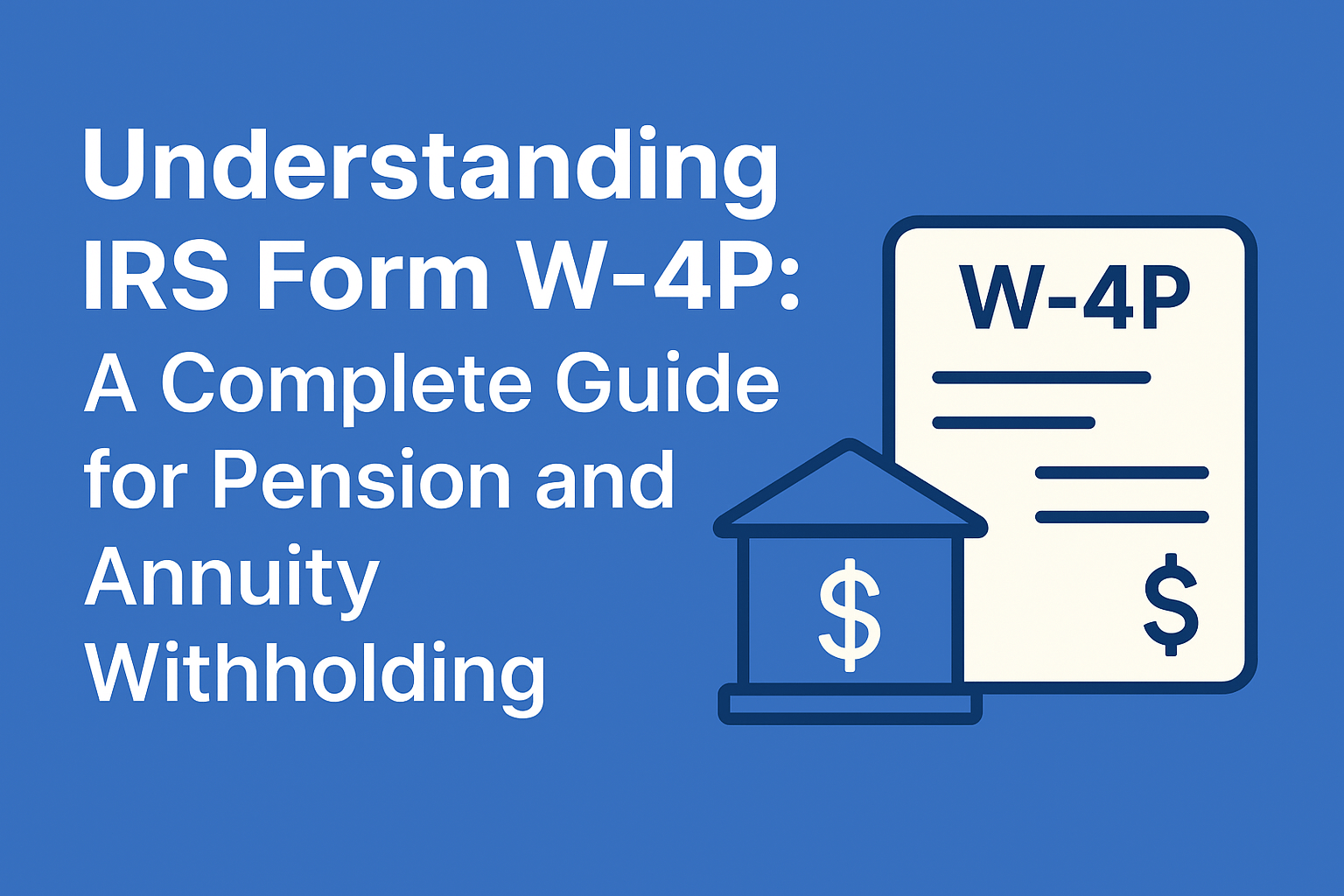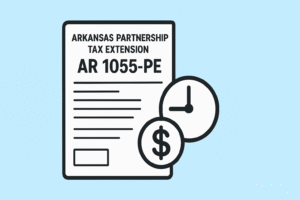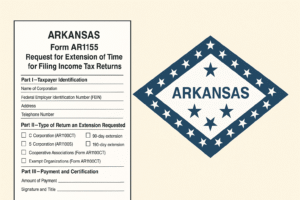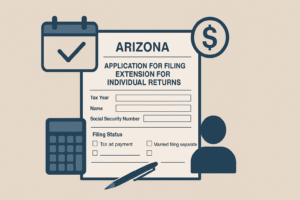Planning your retirement finances involves more than just setting aside savings—it also means understanding the forms that ensure taxes are withheld correctly. One of the most important documents for retirees and beneficiaries is IRS Form W-4P, officially titled Withholding Certificate for Periodic Pension or Annuity Payments. This form instructs payers—such as retirement plan administrators or insurance companies—how much federal income tax to withhold from your pension or annuity distributions.
A properly completed Form W-4P helps prevent unpleasant surprises at tax time by aligning your withholdings with your expected annual tax liability. Below, we break down everything you need to know, from definitions and responsibilities to line-by-line guidance.
What Is Form W-4P?
Form W-4P is the IRS document used to tell your pension, retirement plan, or annuity payer how much federal income tax to withhold from periodic payments. “Periodic” means payments made at regular intervals—monthly, quarterly, or annually. The form mirrors the function of the regular Form W-4 that employees submit to employers but is specifically tailored to retirement-related income.
Key purposes:
- Allows recipients of pensions, retirement benefits, and annuities to elect withholding that matches their tax situation.
- Prevents under-withholding (which could trigger a balance due) or over-withholding (which ties up funds until you file).
- Complies with IRS rules requiring payers to withhold federal income tax unless directed otherwise.
Who Should Complete Form W-4P?
You should complete Form W-4P if:
- You receive periodic payments from a pension, IRA, 401(k), 403(b), or annuity contract.
- You want to adjust your withholding to more accurately reflect your tax bracket, deductions, or other income.
- You prefer to opt out of withholding (if allowed) because you expect minimal or no tax liability.
- You are a survivor or beneficiary receiving distributions from a decedent’s retirement plan.
In short, any individual getting recurring distributions that are taxable may need to submit this form.
Who Will Request Form W-4P?
Your pension plan administrator, insurance company, IRA trustee, or annuity provider will generally request a completed Form W-4P when you:
- Begin receiving regular retirement or annuity payments.
- Make changes to your withholding elections (for example, due to marriage, divorce, or changes in other income).
- Opt out of withholding (if you meet the criteria).
Failure to return the form usually means the payer will withhold tax as if you are married filing separately with no adjustments, which could result in higher withholding than necessary.
What Is a Periodic Pension?
A periodic pension refers to a scheduled stream of income paid from a retirement plan at regular intervals. Examples include:
- Monthly payments from a corporate defined-benefit pension.
- Regular withdrawals arranged under an IRA or 401(k) plan.
- Lifetime distributions from a government retirement system.
Because these payments resemble wages in their regularity, the IRS treats them similarly for withholding purposes.
What Are Annuity Payments?
An annuity payment is a regular distribution from an insurance contract or retirement account that guarantees income for a fixed period or for life. Unlike lump-sum distributions, annuity payments are:
- Predictable (e.g., fixed monthly or yearly).
- Taxed incrementally as you receive them.
- Subject to withholding unless you elect otherwise.
Pensions and annuities are closely related—both provide predictable income, and both are subject to the same withholding rules under Form W-4P.
Difference Between Form W-4 and Form W-4P
| Feature | Form W-4 (Employee) | Form W-4P (Retiree/Payee) |
| Purpose | Tells an employer how much to withhold from wages | Tells a pension/annuity payer how much to withhold from retirement income |
| Target Users | Active employees | Retirees, beneficiaries, annuitants |
| Withholding Basis | Wage income | Pension/annuity income |
| Default if Not Filed | Single, no adjustments | Married filing separately, no adjustments |
How to Complete Form W-4P (Step-by-Step)
The 2024 Form W-4P is structured similarly to the employee W-4 but tailored for retirement payments. Follow these steps carefully:
- Step 1 – Personal Information
- Enter your full name, Social Security Number, home address, and filing status (Single, Married, Head of Household).
- Filing status affects tax brackets and standard deductions.
- Step 2 – Multiple Jobs or Spouse Works (if applicable)
- If you and your spouse both receive income (wages or pensions), use the IRS online withholding estimator or the worksheet provided to ensure accurate combined withholding.
- Step 3 – Claim Dependents
- Enter the total credit amount for qualifying children or dependents if you expect to claim them. This directly reduces withholding.
- Step 4 – Other Adjustments
- Other income (not from pensions): Include expected dividends, interest, or side income if you want extra withholding.
- Deductions: Enter deductions beyond the standard deduction (like mortgage interest or medical expenses) if they significantly reduce your taxable income.
- Extra withholding: Specify any additional flat dollar amount you want withheld per payment.
- Step 5 – Sign and Date
- Your signature certifies that the information is correct. Unsigned forms are invalid.
Tip: Use the IRS Tax Withholding Estimator for precise calculations, especially if you have other income sources.
6. What Payers Do With Form W-4P
When you submit a completed Form W-4P, your pension or annuity payer:
- Records your filing status, dependents, and any extra withholding you request.
- Uses that information to calculate the federal income tax withheld from every periodic payment.
- Remits the withheld tax to the IRS on its required schedule.
- Keeps your W-4P on file for compliance (generally at least four years).
- Reflects the total distributions and the exact amount of tax withheld on your Form 1099-R at year-end.
What Happens If You Do Not Complete Form W-4P?
If you fail to submit Form W-4P, the payer must default to married filing separately, no adjustments withholding. This often leads to:
- Excess withholding (smaller net payments).
- Possible cash-flow constraints during retirement.
- Difficulty reconciling at tax time—although you may recover excess withholding via a refund, your monthly income will have been lower than necessary.
Worse, if you under-withhold due to inaccurate entries, you may face:
- Estimated tax penalties or an unexpected balance due when filing your return.
- Increased administrative delays if changes are required later.
FAQs on IRS Form W-4P
1. Can I change my Form W-4P anytime?
Yes. Submit a new form whenever your tax situation changes (marriage, additional income, etc.). Changes generally apply to future payments.
2. Is Form W-4P mandatory?
If your distributions are taxable, the payer must withhold unless you direct otherwise. Completing the form ensures withholding matches your tax situation.
3. How often should retirees review their W-4P?
At least annually, or whenever your income, deductions, or family status changes.
4. Can I opt out of withholding entirely?
Yes, if you expect no tax liability. Check the box certifying exemption, but be cautious—underpayment can trigger penalties.
5. Does Form W-4P apply to IRA rollovers or lump sums?
No. Lump-sum distributions generally use Form W-4R (for nonperiodic payments) with a different default withholding rate.
Final Thoughts
Managing taxes in retirement is as important as accumulating savings. A thoughtfully completed Form W-4P ensures the right amount of federal income tax is withheld from your pension or annuity payments, preserving cash flow and avoiding penalties. Review your withholding annually, especially when your income changes or tax laws shift, to stay compliant and stress-free.







